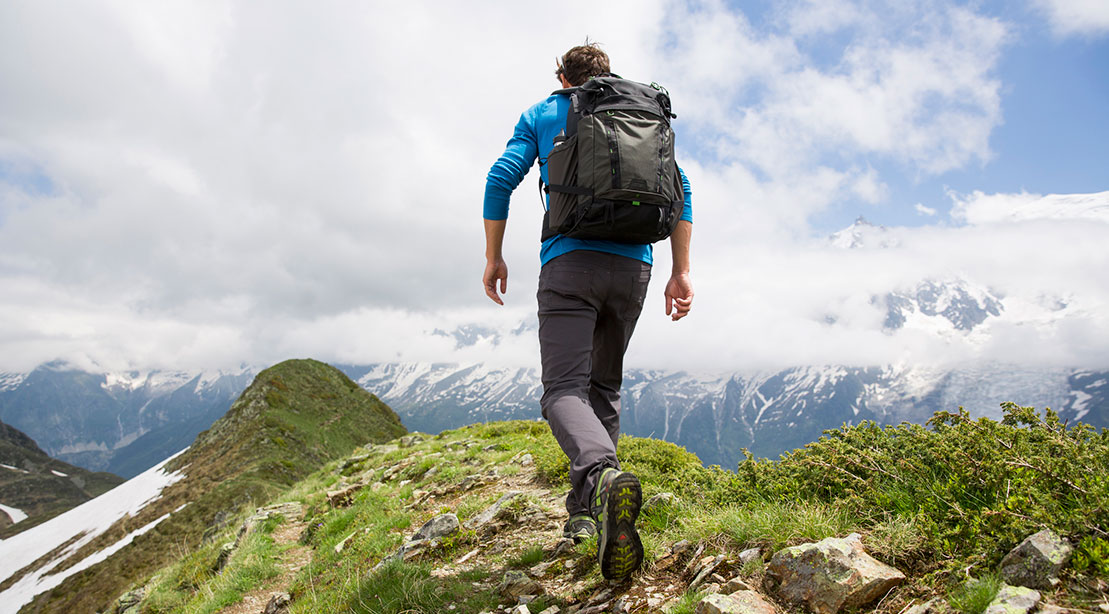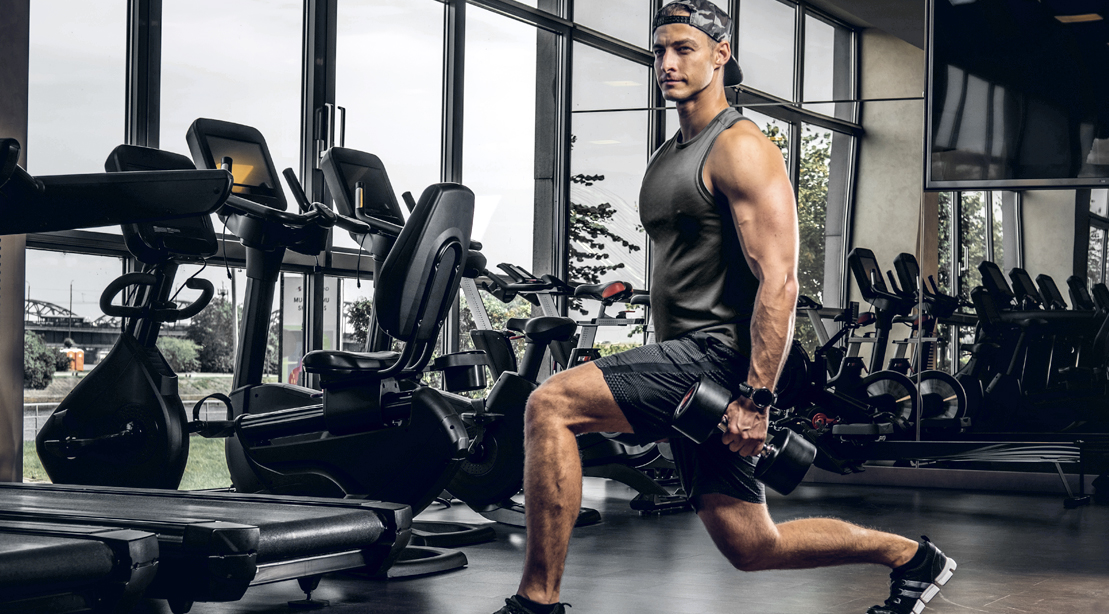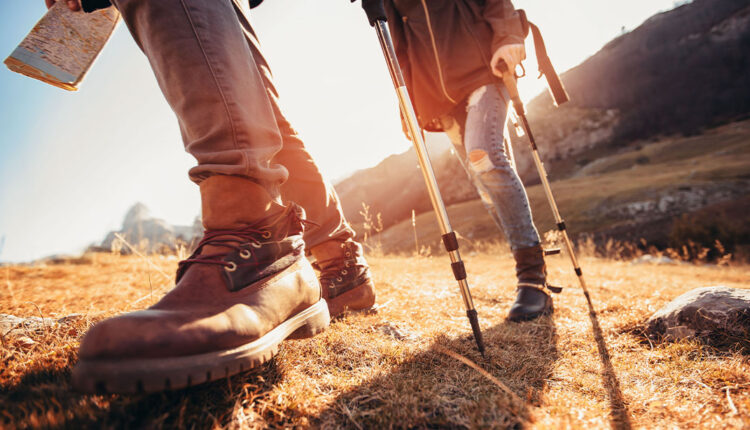The soreness that sets in after leg day can make it hard to complete normal daily tasks like walking up the stairs, (we’ve all seen the leg day memes), let alone combining leg day and hiking a semi-advanced terrain.
On the flip side, post-hike soreness can also make leg day seem (and feel) nearly impossible.
Due to this never-ending cycle of soreness, some may omit one of the two training methods all together (or end up skipping leg day), with the thought that these two powerful lower body exercises cannot co-exist.
However, both hiking and leg day have their place in everyone’s training regimen, and when properly paired together, provide the body with a host of benefits.
“Humans have been ‘hiking’ on this earth since they were created and are meant to walk,” says Mike Wilcox , a certified personal trainer of 18 years and owner of Wilcox Wellness & Fitness, a personal training business with two locations in Maine.
One of Wilcox’s top goals for his clients is to train so they can explore this world without limitations from their bodies caused by injuries and pain. And this fitness expert knows what he’s talking about when it comes to balancing different training methods; he just completed his 10th Ironman 70.3 and wasn’t sore the day after (you read that right).
With that, Wilcox offers his top tips to keep you on the trails and under the squat rack all hiking season long.

How to Design Your Training Around Leg Day and Hiking
- Know the Intensity Level of the Hike: If you’re thinking about taking a long, all-day type of hike, Wilcox warns against crushing your legs with tons of weights or reps the day or two before. “You’ll want to give your legs a couple of days to repair before hitting the trails,” he says. If you are planning a nice, light hike – (around two to three hours), Wilcox encourages not changing anything about when or how you do your leg day (unless it’s straight uphill). “A well-timed light hike can be exactly what your legs are craving to recover from some hard work,” says Wilcox and a hike couldn’t be more perfect for that.
- Good to Know: You are going to naturally pump blood to those sore muscles, helping repair any damage from a recent workout.
- Understand the Type of Terrain: Will you be climbing up and over trees, big boulders, etc.? Will the hike require some good mobility to complete? “If so, consider working a training session that is highlighted by challenging ranges of motion under light load to promote mobile joints you’ll be needing the next day,” Recommends Wilcox. “This can also help your body move more efficiently even if the terrain doesn’t seem too harsh, and make it less likely for discomfort to set in from the repetitive motion of hiking (hip flexors get overworked, etc.)”.

Training Tips to Keep You Moving on the Trail and In the Gym
Make Leg Day a Full-Body Training Session: Regardless of the length of the hike or the amount of challenge throughout the terrain, Wilcox recommends making your leg day more of a full-body training session. “As I mentioned before, humans were designed to walk; It’s the fundamental movement pattern of a human and you should train for that.”
Simply put, when it comes to connecting your leg day to how well you are going to hike, Wilcox recommends designing ‘leg day’ training sessions to mimic the action you will be taking on your hike. “When we hike, our movement patterns connect our upper body to our lower body, the front side to the backside, and the left side to the right side,” he says.
Performing lunges with an overhead dumbbell press while rotating the trunk will do all three of these things and the dominating muscle groups are the legs and the core.
Good to Know: This will prime the muscles that create a movement pattern allowing you to efficiently hike for hours and hours without pain or discomfort.
Self-Care Tip: Mixing in some self-care through Self Myofascial Release (SMR) and you have an excellent little recipe for getting outdoors, attacking those hikes, and having a blast in the great outdoors!
- Ensure your mobility training is challenging: Mobility training should be quite active, creating strength simultaneously. “I think when I feel the best throughout all my training is after challenging my mobility under stress,” he says. “It feels so good and can really energize your body for more activity.”
- Train your body to become more efficient: This will cause you to need less and less ‘recovery’ from big efforts. As you know, Wilcox just completed his 10th Ironman 70.3 a couple of weeks ago and trained the very next day working on his biomechanics in the gym. He wasn’t sore, (just pretty tired), and says working out is just what his body needed to recover. “I believe it’s the efficiency in my movements that allows me to successfully complete a challenging event without pain and too much soreness.”
The Dos and Don’ts of Balancing Leg Day and Hiking
Do This:
- Choose full-body movements that mimic the movement pattern of hiking (walking)
- Choose an amount of resistance and number of repetitions that allows you to feel slightly tired, but not fatigued to failure.
- Remember why you like hiking and train to become better at it, not to be better at “leg day” necessarily, but do what is required to become a better hiker and do the things you love to do.
Don’t Do This:
- Ruin your hike by doing too much on leg day. It’s not worth it. Leg day can be used as a nice recovery day, Wilcox isn’t saying don’t go for it, but rather don’t try to set any personal records unless you’ve got an ample amount of days for your body to recover before your hike.
- Underestimate how utilizing effective SMR and mobility training techniques can enhance all leg days as well as your hobby of hiking.
- Stress too much about any of your training days. Make it fun! Wilcox encourages you to make it about performing your hobbies with more efficiency because efficiency makes everything more fun to do. “Going heavier, faster, harder, etc. doesn’t always equate to performing better and in fact, I would bet a good amount that most injuries for active people are from overtraining or overdoing something,” he says.
Wilcox encourages you to do everything you can in the gym to enhance what you can do outside of the gym. Nothing less, nothing more. “The gym is your way of doing more outside in nature,” says Wilcox. You do what is required in the gym to enjoy what this world has to offer us. Make the most of it and then get outdoors and enjoy. This way, both hiking and gym days can live perfectly balanced in your fitness regimen while boosting your overall condition and quality of life.


Comments are closed.